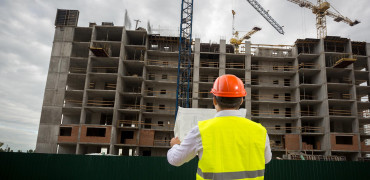The Warm Homes Plan has been announced by Labour, a repackaging effort with some new items of interest.
The focus is on upgrade of homes including those in fuel poverty, and a welcome streamlining of the route to installing heat pumps.
With numbers of installations up but still falling behind aspirations, Government is now promising to upgrade 300,000 homes in 2025 (where have we heard that nice round number before?), bolstered by the Boiler Upgrade Scheme which was tweaked upwards to £7,500 by Rishi Sunak.
A big change is that heat pumps no longer have to be a metre away from a property boundary, which will free up thousands of installations, which will also not require planning permission to go ahead.
Seemingly very good news, particularly as this winter starts to bite.
It’s about how manufacturers shift to heat pumps versus their fossil fuel boiler production
Industry reaction
However, how is it being received in the industry, and what more is being done centrally to drive the much-needed boost in installer numbers?
Despite the issues around installers, a 2024 survey found that customer demand was a bigger issue than finding installers, and better financial incentives are needed for customer uptake.
United Living Group, a major property services UK player, has called the move “great,” and hails the Department of Energy Security and Net Zero’s focus on social housing in particular, with the Plan representing a £1.29bn investment in that sector over five years.
They reckon that manufacturers have “broadly welcomed the proposals” too, as the result of a “collaborative approach to developing practical policies that balance industry needs with the UK’s net zero goals.”
The Heat Pump Association says that the remaining elephant in the room is the ‘spark gap’ between gas and electricity prices, which is a fundamental barrier to adopting decarbonised solutions.
If the Government isn’t prepared to take an interventionist approach to reducing the impact of higher electricity prices (or making gas prices less attractive), then we aren’t going to see the numbers of heat pump installs they hope for.
And the Boiler Upgrade Scheme arguably needs to be extended to other innovative heat pump varieties beyond the ‘traditional’ model types, to truly encourage fit-for-purpose design for future energy efficiency to be optimised.
Delayed sticks
And when it comes to financial carrot and sticks, the Clean Heat Market Mechanism which will place fines on fossil fuel boiler manufacturers is confirmed as coming into force in April 2025 in this week’s announcement.
The delay of a year demonstrates the difficulty of making the plan to require at least 4% of sales to be heat pumps work in the market.
Arguably, it’s not going to disproportionately target fossil fuel gas and oil boiler makers as a separate category, as most of the major traditional boiler manufacturers now have a heat pump offering.
Those that don’t are unfortunately now part of a vanishing age. It’s more about how manufacturers start to balance the shift to heat pumps versus their fossil fuel boiler production, and that’s something they’ve been wrestling with for years.
Production probably isn’t the issue, growing the installer network quickly still is, I’d suggest – and we need informed professionals who can make the right design decisions for futureproofing homes.
Do we look at a more comprehensive international campaign to recruit the many more competent installers needed from Europe and further afield, politically problematic though that may be?
James Parker is managing editor of Housebuilder and Developer and Architects Datafile




